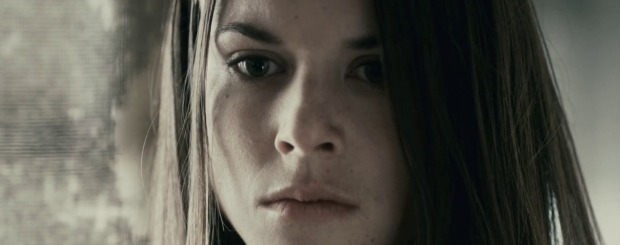I Spit On Your Grave
This rape-revenge remake is not for the fainthearted.
Plot summary
A writer who is brutalized during her cabin retreat seeks revenge on her attackers, who left her for dead.

The original I Spit On Your Grave, initially titled Day of the Women by writer/director Meir Zarchi, was one of the most controversial rape-revenge films of the exploitation genre. It told the story of Jennifer Hills, a writer trying to finish her latest novel in an isolated lakeside house in the American south. She attracts the unwanted attention of four locals, who proceed to terrorise and repeatedly rape her, and then leave her for dead. After recovering physically, if not psychologically, from her ordeal, Jennifer wreaks revenge on her rapists one-by-one in a bloody and biblical fashion – Day of the Women indeed.
This twenty-first century rejig joins a list of horror remakes from this period, including Wes Craven’s The Hills Have Eyes and Last House on the Left, and stays pretty faithful to the original. Sarah Butler replaces the iconic Camille Keaton as the victim, and victor of the piece. She navigates the transitions of Jennifer’s character with skill, following the protagonist’s journey from naively uppity city girl who unwittingly incurs the lust and wrath of her attackers, to the steely perpetrator of revenge. The rapists are played with surprising nuance by a troupe of relatively-unknown actors. A special nod goes to Andrew Howard as Sheriff Storch, a nightmarish authority figure-turned-bad who has been added into the remake. The original can be criticised for painting the rapists as one-dimensional country bumpkins of the Deliverance variety. In this remake, they really should know better, and are helmed by a corrupt man of the law, inching up the sadistic nature of their attack with a startling mixture of brutality and weakness.
The 1978 version was reviled by some critics and audiences who saw the film as revelling in the degradation of Jennifer and her ensuing violence – the remake treads a little lighter in its portrayal of the rape but may come under similar attacks from some quarters. As film professor Carol Clover said of the original; “For revenge fantasies to work, there must be something worth avenging – something egregious enough to justify hideous retaliation”. This isn’t as simple as a ‘catch and dispatch’ horror. It is only in showing the hideous reality of what happens to Jennifer that her eye-for-an-eye revenge can be respected, and congratulated, by the audience. The death scenes are graphic and disturbing, but tinged with an element of black humour that never strays into ultimate silliness – laugh you may but you won’t be allowed to forget why the men are enduring their cruel and unusual punishments.
This rape-revenge remake is not for the fainthearted, but fans of exploitation cinema, or those who like their horror to come with equal amounts of gore and gravity, should add another star.











COMMENTS